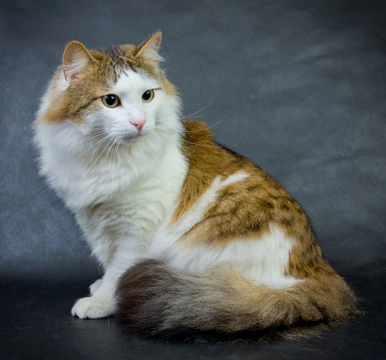
The 5 best cat breeds for an indoor-only home
In the UK, the vast majority of our domestic cats are what are known as indoor-outdoor cats, meaning that they have independent access to the outside world, either by means of having a cat flap so that they can come and go as they please, or by means of being let out and let back in at certain times of the day. In order countries such as the USA however, it is much more common for cats to be kept as indoor-only pets, due to the presence of potential dangers or predators, such as other animals, busy traffic, and disease and illness.
Even within the UK, it is certainly not unheard of to keep cats indoors only, and the reasons behind why an owner might make this choice are varied and numerous-cats with immune deficiencies such as FeLV or FIV often live indoors only, and people that live in flats and apartments might be unable to give their cats access to the outside world too.
Additionally, certain breeds of cats are naturally better suited to an indoor-only life rather than being able to go out unsupervised, and some cats that could potentially go out also find that indoor-only life is not too restricting and can still remain happy.
In this article, we will look at five of the best cat breeds for an indoor-only home. Read on to learn more.
The Sphynx
The Sphynx cat is one of the most distinctive, recognisable breeds out there, because of their main defining feature-baldness! Sphynx cats may have a small amount of very sparse, downy hair on their bodies or may be virtually or literally bald, and the fact that this breed does not have a fur coat means not only that they are well suited to indoor life, but that this is often the best choice for them, due to the challenges of their going outside.
In the wintertime, the Sphynx is apt to become much too cold very quickly if they go outside, while in the summer, they are at high risk of sunburn and other issues related to the heat and bright weather.
Most Sphynx cats are kept indoors only, or mainly indoors with a run to allow them to take the air, or possibly, even a harness to go for supervised walks!
The Ragdoll
The Ragdoll is a large, longhaired cat that is both beautiful and very gentle and affectionate, being distinctive for their propensity to fall limp when lifted up. They are sweet, loving cats that do not have as much of a sense of adventure as most other breeds, meaning that they are unlikely to miss the chance to go outside, and will adapt well to living indoors.
The Ragdoll is also renowned for not being very streetwise, and in some cases, the decision to keep cats of the breed inside is made for their safety above all.
The Ragamuffin
The Ragamuffin is a very close relative of the Ragdoll, and the decision to class the Ragamuffin as a separate breed was made largely due to the politics of the breed name and what cats could be designated as such, rather than due to a large divergence between the two breeds.
Ragamuffins can be seen in more colour and pattern variations than the Ragdoll itself, but aside from this, the two breeds have more in common than they do apart. For this same reason, the Ragamuffin usually does well inside, and might not even be streetwise enough to be able to go out safely without supervision.
The Munchkin
The Munchkin cat is one of the most unusual looking of cats, and is almost certainly the breed that generates the most controversy! The Munchkin’s main trail is the shortness of their legs, which is caused by a form of achondroplasia, or dwarfism. This means that cats of the breed cannot run, climb or jump as freely as other breeds, which can affect their safety and survival when outside.
Aside from this, the breed is reputed to be outgoing, friendly and playful-but they are also prone to certain types of health problems, which come as an additional effect of their dwarfism. For this reason, the breed is not accepted or recognised by the GCCF, and so they are not actually seen as a pedigree breed in the UK.
The Scottish Fold
The Scottish Fold is another unusual looking cat, this time due to their ears! As the name implies, the ears of the Scottish fold are folded over, giving cats of the breed a very distinctive and cute appearance! However, once again, selective breeding to reliably reproduce the genetic anomaly that causes the folded over ears can also lead to other anomalies for the cat, some of which are detrimental to their health and wellness, which means that often, keeping such cats inside is wise.
Again, the GCCF does not recognise or endorse this breed of cat, due to the potential risk of health problems.



